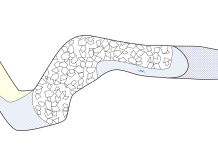Tseralo
Active member
This is my first time drawing up a survey from scratch. We have lots of different kinds of data most of it historic but the main drag of the first chamber was resurveyed by Mark Burkey, Fred Nunn and myself this trip. If anyone more experienced has any feedback on making it more readable or things you would like to see on a survey I haven't done let me know.
I would like to add the dive line once I've found a good way to do that in therion. An elevation is also on my list.
I would like to add the dive line once I've found a good way to do that in therion. An elevation is also on my list.




